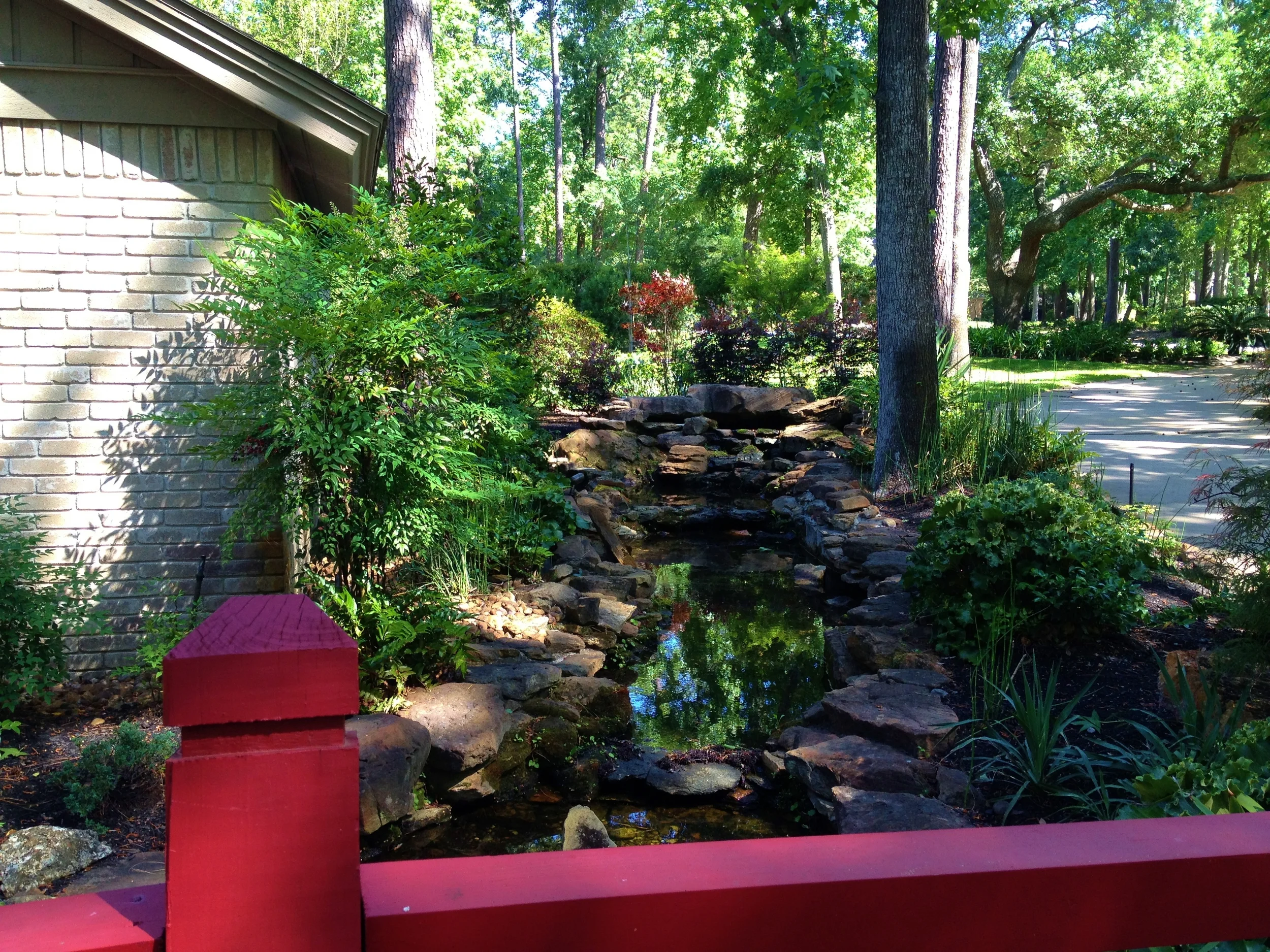

































Your Custom Text Here
The homeowner's style, interior chic decor and bridge inspired this Japanese stroll garden; transforming a dull mismatched yard to a beautiful Japanese landscape.
Kaiyu-shiki or Strolling Gardens require the observer to walk through the garden to fully appreciate it. A premeditated path takes observers through each unique area of a Japanese garden. Uneven surfaces are placed in specific spaces to prompt people to look down at particular points. When the observer looks up, they will see an eye-catching ornamentation which is intended to enlighten and revive the spirit of the observer. This type of design is known as the Japanese landscape principle of "hide and reveal".
The red bridge was known as Guzei and it was supposed to represent the route blessed to take to salvation.
The bridge, particularly the bridge over water, represents crossing over from one world to the next, from the profane to the sacred, cleansing yourself to enter the pure world of nature.
In Zen symbolism red represents life force, preservation, the sacred, and red transforms the delusion of attachment into the wisdom of discernment. Thus the symbolism of the bridge is reinforced by it being red, i.e. sacred and transforming worldliness into wisdom.
Rare and gorgeous plants such as purple ground orchids (bletilla striata), blood lilies (scadoxis multiflora), prostrate plum yews (cephalotaxus harringtonia), phlox paniculatas, stokesia asters, manson gingers (kaempferia pulchra mansoni), and ginga aspidistras accompany elements of Japan such as sasanqua camellias (shi shi gashira and showa no sake), azaleas, nandina domestica and nana nandina along with grasses, ferns, hostas and irises for texture. Each plant was specifically handpicked for structure and design elements. Japanese boxwood will be kept hedged and short for a formal entry with a zen flow. Two large ponds now reflect the beauty of the natural elements of the strolling garden and provide a tranquil peace while listening to the flowing water.
Seven different specimens of Japanese maples were selected: Beni Kawa Japanese Maple, Waterfall Japanese Maple, Tamukeyama Japanese Maple, Red Emperor Japanese Maple, Fireglow Japanese Maple, Moonfire, Japanese Maple and Seiryu Japanse Maple (as shown here). Pom Pom junipers, Japanses Yew (Podocarpus) and Loropetalum Chinese give height and a formal element with a classic japanese style.
The homeowner's style, interior chic decor and bridge inspired this Japanese stroll garden; transforming a dull mismatched yard to a beautiful Japanese landscape.
Kaiyu-shiki or Strolling Gardens require the observer to walk through the garden to fully appreciate it. A premeditated path takes observers through each unique area of a Japanese garden. Uneven surfaces are placed in specific spaces to prompt people to look down at particular points. When the observer looks up, they will see an eye-catching ornamentation which is intended to enlighten and revive the spirit of the observer. This type of design is known as the Japanese landscape principle of "hide and reveal".
The red bridge was known as Guzei and it was supposed to represent the route blessed to take to salvation.
The bridge, particularly the bridge over water, represents crossing over from one world to the next, from the profane to the sacred, cleansing yourself to enter the pure world of nature.
In Zen symbolism red represents life force, preservation, the sacred, and red transforms the delusion of attachment into the wisdom of discernment. Thus the symbolism of the bridge is reinforced by it being red, i.e. sacred and transforming worldliness into wisdom.
Rare and gorgeous plants such as purple ground orchids (bletilla striata), blood lilies (scadoxis multiflora), prostrate plum yews (cephalotaxus harringtonia), phlox paniculatas, stokesia asters, manson gingers (kaempferia pulchra mansoni), and ginga aspidistras accompany elements of Japan such as sasanqua camellias (shi shi gashira and showa no sake), azaleas, nandina domestica and nana nandina along with grasses, ferns, hostas and irises for texture. Each plant was specifically handpicked for structure and design elements. Japanese boxwood will be kept hedged and short for a formal entry with a zen flow. Two large ponds now reflect the beauty of the natural elements of the strolling garden and provide a tranquil peace while listening to the flowing water.
Seven different specimens of Japanese maples were selected: Beni Kawa Japanese Maple, Waterfall Japanese Maple, Tamukeyama Japanese Maple, Red Emperor Japanese Maple, Fireglow Japanese Maple, Moonfire, Japanese Maple and Seiryu Japanse Maple (as shown here). Pom Pom junipers, Japanses Yew (Podocarpus) and Loropetalum Chinese give height and a formal element with a classic japanese style.